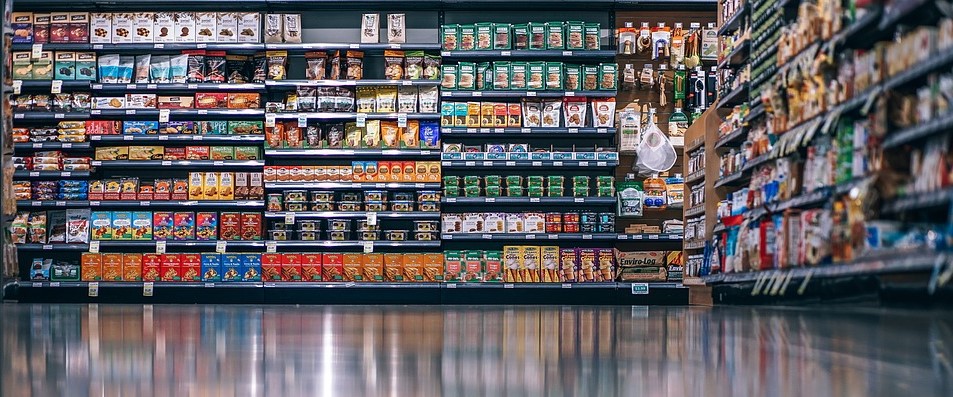Joost de Jong of the Dutch Transition Coalition of Food Systems argues that European food and farming policy need to be more closely integrated. Part 1.
Europe is facing an increase in obesity and diet-related diseases, and with that, an increase in the costs of health care. Striking a balance between personal choice on the one hand and and the state/EU on the other is always fraught. However there can be a role for Europe to play some role in influencing our food environment and diet in the right direction.
The Common Agricultural Policy (CAP) after all, allocates more than two billion euros a year to foods with mixed health messages. It provides coupled support for keeping meat cows, sheep or veal. Income support is also provided for producers of wine, sugar and red meat.
There is a lack of coherence between Food Policy and the CAP. This contributes to an unhealthy food environment and fractured food patterns in Europe.
Farmers are producing raw materials
The Communication “The future of food and farming” of the European Commission of November 2017 is very ambitious on the role of the CAP for a healthy Europe: “The CAP also has a role to play in promoting healthier nutrition, helping to reduce the problem of obesity and malnutrition, making nutritious valuable products such as fruits and vegetables easily available for EU citizens. A good example is the Schools schemes, under which free fruit, vegetable and dairy products are subsidised in schools and by using these schemes to promote class room activities related to healthy eating. Campaigns to promote healthy dietary practices and increasing the consumption of fruit and vegetables should be a focal point in the CAP promotion activities”.
The current practice however is quite different:
- The CAP is mainly focused on primary producers. Farmers, receiving CAP money, deliver raw materials. The food industry processes these raw materials into ,in many cases, unhealthy fast food products. Farmers however have limited opportunities to change this behaviour of the food industry.
- The marketing budget of the retail and food industry is in large part spent selling these unhealthy products.
- Many politicians default to individual consumer responsibility when considering healthy food choices. Health scientist Maartje Poelman of the University of Utrecht disagrees: “that ‘structural, universal (preventive) measures aimed at the entire population (for example, reducing salt content in soup, a soda tax) lead to more health gains than an approach in which the individual’s own responsibility is central (eg individual dietary advice). Conclusion Herman Lelieveldt (FTM april 2018): “set the standard for the consumer’s sovereignty: let companies and government restrict and control choices”.
- In the Netherlands the budget for promotion campaigns of fruit and vegetables and school schemes is less than 1% of the total CAP budget for the Netherlands.
Unhealthy food is too cheap
The European Commission is proud that food is relatively cheap and widely available. But that also means that many unhealthy products are very cheap. It‘s therefore all the more urgent to check whether these unhealthy products can be made more expensive by changes of the Common Agricultural Policy. This applies in particular to beef, wine, beer and sugar beet.
But what is unhealthy? The World Health Organization has stressed different times the risks of red meat. Last month the Lancet had an article on the impact of alcohol on our health. Sugar is associated with obesity and too much added sugar will increase the risk of dying with heart diseases.
Our ‘food environments’ has a very strong impact on our diets. Food environments have been defined as: “The collective physical, economic, policy and sociocultural surroundings, opportunities and conditions that influence people’s food and beverage choices and nutritional status”
The role of food environments is quite pointedly described in The Lancet 2015 series on obesity: “Today’s food environments exploit people’s biological, psychological, social, and economic vulnerabilities, making it easier for them to eat unhealthy foods. This reinforces preferences and demands for foods of poor nutritional quality, furthering the unhealthy food environments. Regulatory actions from governments and increased efforts from industry and civil society will be necessary to break these vicious cycles.”
The EPHA, The European Public Health Alliance, has explicitly linked the food environment and CAP (.pdf) This report is predicated on the evidence that a link between the CAP and dietary outcomes does exist. The policy’s payment schemes and market organisation rules provide incentives to producers who react by adjusting production decisions, thereby influencing food availability and the general ‘food environment’ in Europe.
In the Common Agricultural Policy there is still coupled support for a number of these agricultural products. So growing sugar beet, in a number of countries, is supported financially. For beef and veal, this voluntary coupled support amounts to € 1.7 billion annually for sheep and goats, € 486 million per year and € 176 million per year for sugar beet. In addition to this coupled support, money is also allocated to increase consumption through subsidies on the promotion of these products. This is unjustifiable from a public health perspective. But in addition to this coupled support, there are also historical premiums. The current area aid is unfocused. Farmers who grow 10 hectares of sugar beet or grapes also receive per hectare support for those ten hectares. The same applies to countless cattle farmers who keep beef cows and in this way receive much support the production of beef, which means that the meat can be sold relatively cheaply on the market.
In Europe income support is paid for 30 million hectares for sheep and rough grazing. A payment of 100- 200 € per ha corresponds with €3- 6 billion. For the production of sugar, beer and wine income support is paid for 7 million ha. With an average payment of 300 € per ha a year 2 billion is paid for the producers of these products. A more selective use of this area aid would reduce the supply and make the beef, beer and red meat more expensive, which would be a preferable direction for public health, sustainability and finances.
Here are opportunities for Europe to give direction to healthier food environments and consumption. That therefore requires higher import tariffs for these products to ensure that these products are not imported for a short time.
With the current Mercosur negotiations there is a risk for the import of cheap beef from Brasil. From a healthy viewpoint and from sustainability and from protecting our farmers a limited import of cheap beef should be the case.
Joost de Jong is an active member of the Dutch Transition Coalition of Food Systems.






